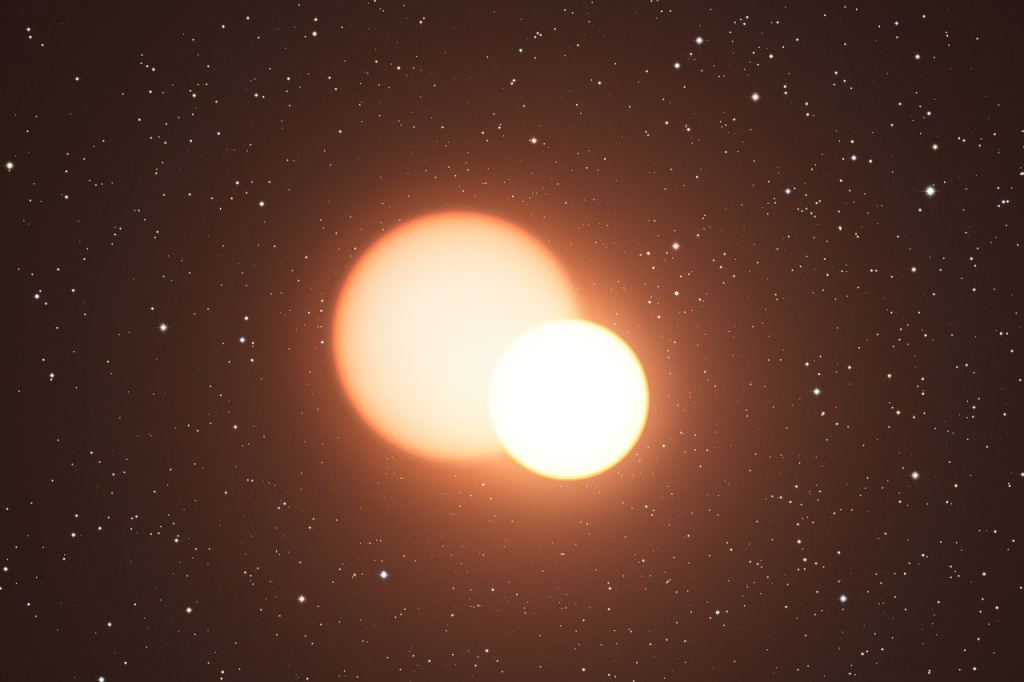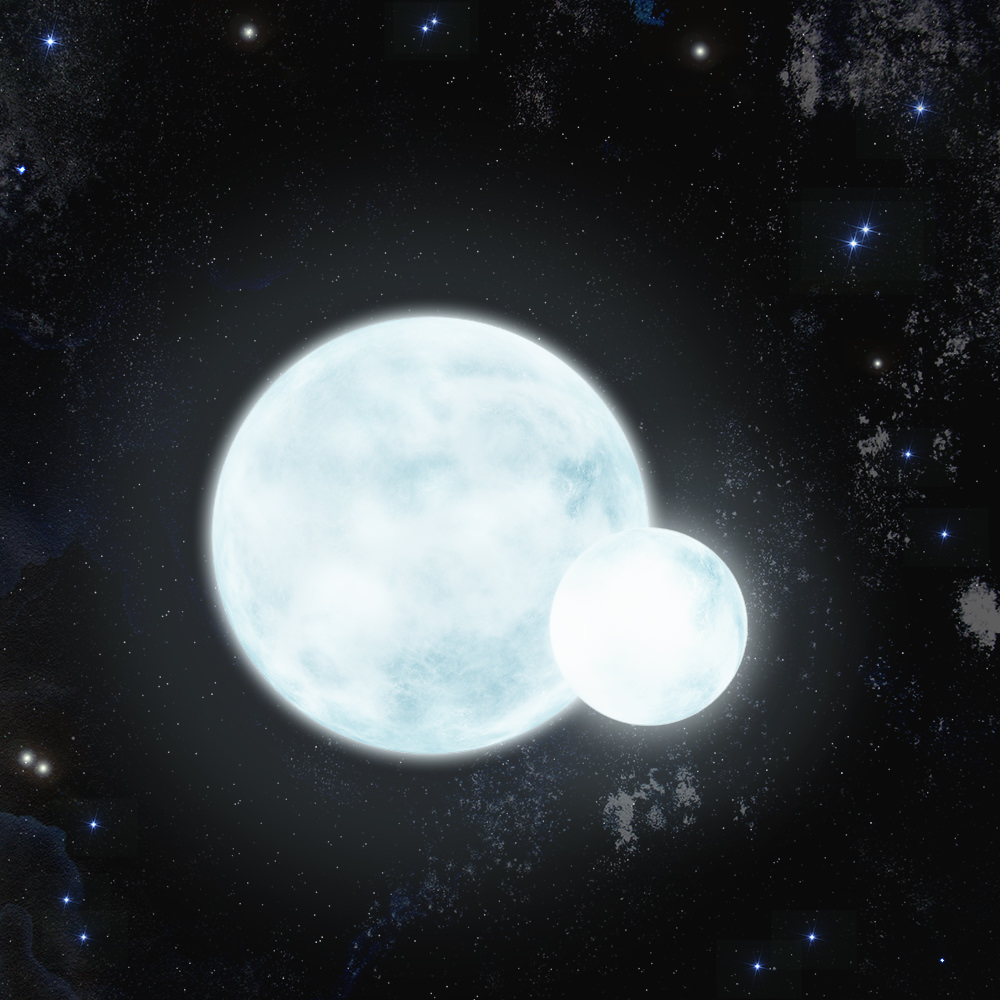In the 17th century, astronomers witnessed many stellar events that proved that the starry sky was not "fixed and eternal." This included stars whose brightness varied over time - aka. "variable stars." By the 20th century, many variable stars had been cataloged and astronomers have discerned subclasses of them as well - notably, stars that swell and shrink, known as pulsating variables.
In all cases, these variable stars were found to have rhythmic pulsations that were visible from all sides. But a recent discovery by an international team has confirmed that there are variable stars that can pulse from only one side. This pulsating star, part of a system known as HD 74423, is located about 1,500 light-years from Earth and is the first of its kind to be found.
The discovery was made by a team led by astronomers from the Nicolaus Copernicus Astronomical Center (CAMK) in Warsaw, Poland, and included members from the MIT Kavli Institute for Astrophysics and Space Research (MKI), the Instituto de Astrofísica de Canarias, the Sydney Institute for Astronomy (SIfA), and multiple universities. The study that describes their findings recently appeared in the journal Nature Astronomy.

For decades, astronomers have theorized about the existence of pulsating stars whose oscillations are visible from only one side. But it was not until recently, thanks to citizen scientists who were examining data from NASA's exoplanet-hunting Transiting Exoplanet Survey Satellite (TESS), that a candidate was found.
Shortly thereafter, the citizen scientists contacted Prof. Saul Rappaport, a researcher with the MIT Kavli Institute and the contact person of the TESS research effort. Before long, he was joined by an international team of astronomers who were also busy studying this star, which was revealed to be part of a binary system.
Known as HD 74423, and located 1,500 light-years from Earth, this system consists of a white dwarf that is roughly 1.7 times the mass of the Sun and an M-type red dwarf companion. These two stars orbit each other with a period of just 1.6 days, which made it easy to detect them making transits (where they passed in front of each other relative to the observer).
Prof. Gerald Handler, a researcher at the Nicolaus Copernicus Astronomical Center was the lead author of the paper. As he explained in a recent CAMK-PAN press release, "The exquisite data from the TESS satellite meant that we could observe variations in brightness due to both the gravitational distortion of the star as well as the pulsations".

To their surprise, the team observed that the strength of the pulsations depended on the angle to which the star was observed, as well as the corresponding orientation of its red dwarf star companion. In the end, all of the tiny fluctuations in brightness observed by the team appeared only when the same hemisphere of the star was pointed towards them.
This is how the astronomers were able to conclude with certainty that the pulsations were happening on only one side of this star. The strength of these pulsations, they noted, also varied with an almost two-day period, matching the orbital period of the stars. From this, the team theorized that the tight orbit of this binary pair results in them exerting a considerable gravitational pull on each other.
This effect would disrupt the surfaces of both stars and cause them to become elongated and tear-drop shaped, which would also have the effect of focusing the star's electromagnetic pulses to one side. As Paulina Sowicka, a Ph.D. student at CAMK PAN and co-author of the study, said:
"As the binary stars orbit each other we see different parts of the pulsating star. Sometimes we see the side that points towards the companion star, and sometimes we see the outer face."
As early as the 1940s, astronomers have predicted that there could be a class of stars where pulsations are affected by a close companion. Also, the idea that tidal forces can cause the pulsation axis of a star to move has been theorized by astronomers for over 30 years. Thanks to this study and all those who made it possible, there is finally observational proof of these phenomena (which was lacking until now).
Professor Don Kurtz, a researcher at the University of Central Lancashire (UK) and co-author of the study, was quite excited by the find, which he has spent the better part of his career looking for. "We've known theoretically that stars like this should exist since the 1980s," he said. "I've been looking for a star like this for nearly 40 years and now we have finally found one."
Also exciting is the fact that this discovery is not at all likely to be the last of its kind. In fact, as Prof. Rappaport was sure to add, "Beyond its pulsations, there doesn't seem to be anything special about this system, so we expect to find many more hidden in the TESS data!"
Last, but not least, this find is exciting because of the way it brought together a cutting-edge science mission, citizen scientists, and professional researchers to make a major discovery. It is a testament to the current age of astronomy and space exploration, which takes advantage of data-sharing and public participation like ever before.
Further Reading: CAMK-PAN, University of Sydney, Nature Astronomy